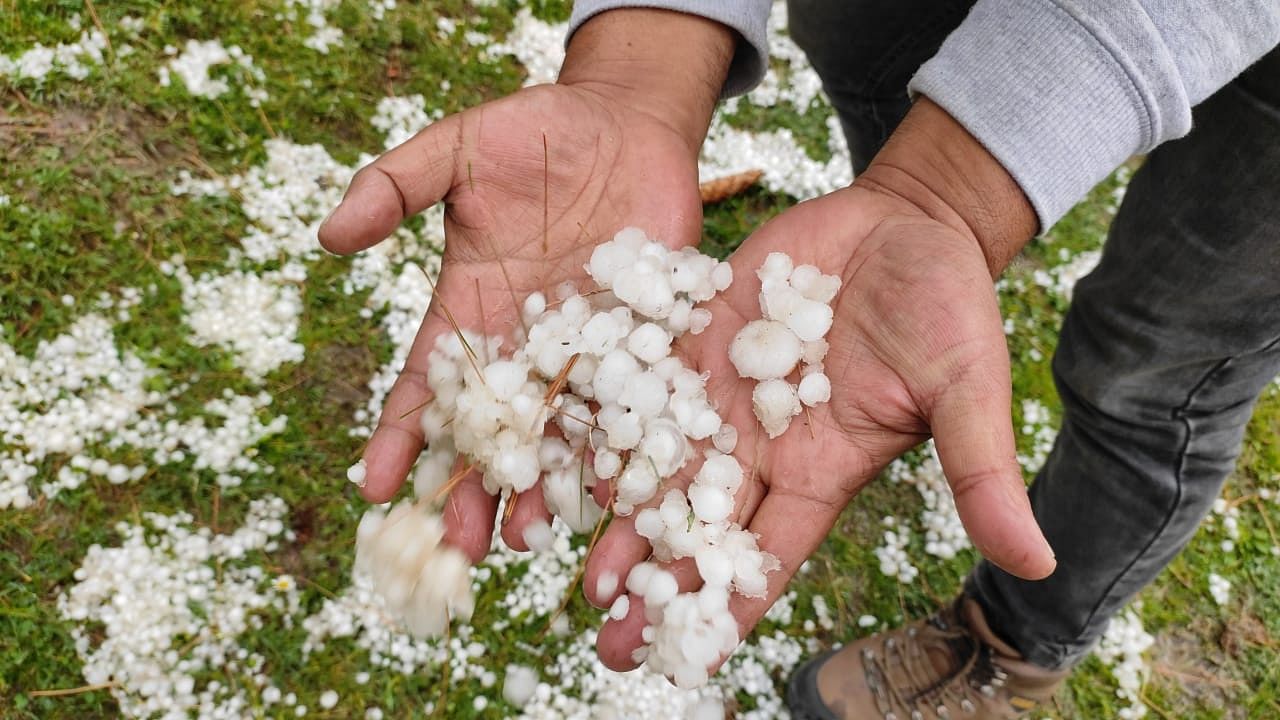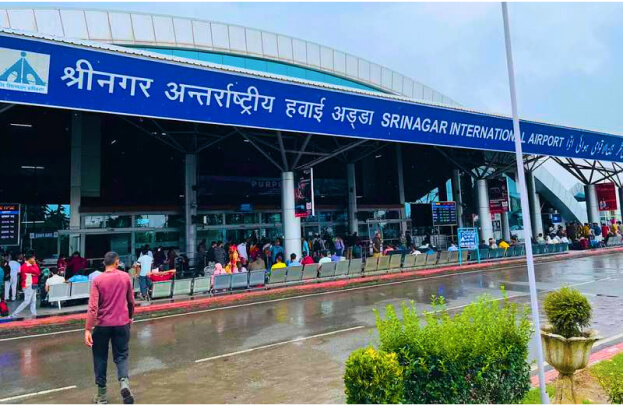Hailstorm Ravages South Kashmir Orchards, Farmers Seek Urgent Relief
Srinagar 18 April 2025: A sudden and devastating hailstorm wreaked havoc across South Kashmir, leaving orchardists and farmers reeling from the extensive damage. The Shopian district, known as the heartland of fruit cultivation in the Valley, bore the brunt of the calamity, with thousands of families now facing uncertainty as their primary source of income has been severely impacted.
Impact on Farmers and Crops: A Fragile Livelihood at Risk
The hailstorm, lasting approximately 15 minutes, struck without warning, bringing marble-sized hailstones that tore through the region. Apple blossoms, vital for ensuring a fruitful harvest, were shredded beyond repair, leaving farmers in despair. Trees were uprooted, while budding crops on the verge of blooming were completely destroyed.
Ghulam Rasool, an orchard owner in Narapora, voiced his anguish: “It was like watching our entire year’s hard work crumble before our eyes.” For many, apple farming is not just an occupation but a way of life that sustains generations. Damage at this critical blooming stage means potential long-term financial ruin.
The affected areas include Shadab Karewa, Kanipora, Zawoora, Manloo, Narapora, and Pargochu, among others. These areas are central to the apple industry in South Kashmir, which forms the backbone of the region’s agricultural economy. With the destruction hitting at a time when apple blossoms are at their most vulnerable, thousands of families are left in dire straits.
Economic Fallout: A Crisis in the Making
Apple cultivation is a significant contributor to South Kashmir’s economy. The storm’s impact has created a domino effect:
- Loss of Livelihood: Orchardists, laborers, and local traders connected to the industry now face an uncertain future.
- Delayed Recovery: Affected farmers will require time, effort, and resources to restore their orchards, some of which might not survive the season.
- Wider Economic Ripples: The fruit trade supports secondary industries, including packaging, transport, and local markets, all of which are likely to feel the sting of this calamity.
Farmers are particularly concerned as the apple blossoms—key to a healthy fruit yield—were at their peak blooming stage during the storm. Without blossoms, there will be no fruit to harvest, affecting income not just for this season but for several cycles ahead.
Government Response: A Call for Immediate Action
In the aftermath of the storm, the district administration has begun deploying assessment teams to evaluate the extent of the damage. While officials have assured farmers that compensation and relief measures will be introduced, affected communities are urging the government to expedite support under the Kisan Credit Card (KCC) scheme to address immediate financial needs.
Farmers have appealed for:
- Compensation for Damaged Crops: A fair and fast appraisal process to ensure adequate monetary relief.
- Subsidies for Farm Equipment and Repairs: Assistance to rebuild damaged orchards and irrigation systems.
- Debt Relief: Extended moratoriums or waivers on agricultural loans under KCC schemes.
The administration’s focus remains on delivering targeted relief to those most severely affected while ensuring transparency in damage assessments.
The Role of Climate Change: A Growing Threat
This hailstorm is yet another reminder of the growing vulnerability of Himalayan regions like Kashmir to extreme weather events. Climate change has amplified unpredictable weather patterns, with storms, unseasonal rainfall, and fluctuating temperatures increasingly impacting local agriculture.
- Long-term Risks: Changes in rainfall distribution and rising temperatures could disrupt traditional agricultural calendars, affecting everything from sowing to harvesting.
- Need for Adaptation: Investment in climate-resilient farming practices, such as hail nets, integrated pest management, and weather insurance, is critical for mitigating future risks.
Weather Warnings: Prepare for Further Instability
The Meteorological Department has issued warnings for additional unstable weather in the coming days, advising farmers and residents to take precautionary measures. Strong winds, thunderstorms, and isolated hailstorms may further aggravate the already fragile situation. Farmers are being encouraged to:
- Cover crops and orchards using protective nets.
- Avoid pruning or spraying in the immediate aftermath to allow trees to recover.
- Monitor weather updates and coordinate with local agricultural officers for guidance.
Key Takeaways
This incident underscores the pressing need for:
- Robust Relief Mechanisms: Quick deployment of funds and compensation to avoid economic distress for vulnerable farmers.
- Climate-Resilient Infrastructure: Proactive investment in tools and technologies to minimize future losses due to hailstorms and other extreme weather.
- Policy Advocacy: Greater focus on agricultural reforms and climate adaptation measures to protect farming communities.
For Ghulam Rasool and thousands like him, the storm’s destruction is a heartbreaking blow. Yet, with timely intervention and systemic changes, the Valley’s resilient farmers could recover and rebuild.



